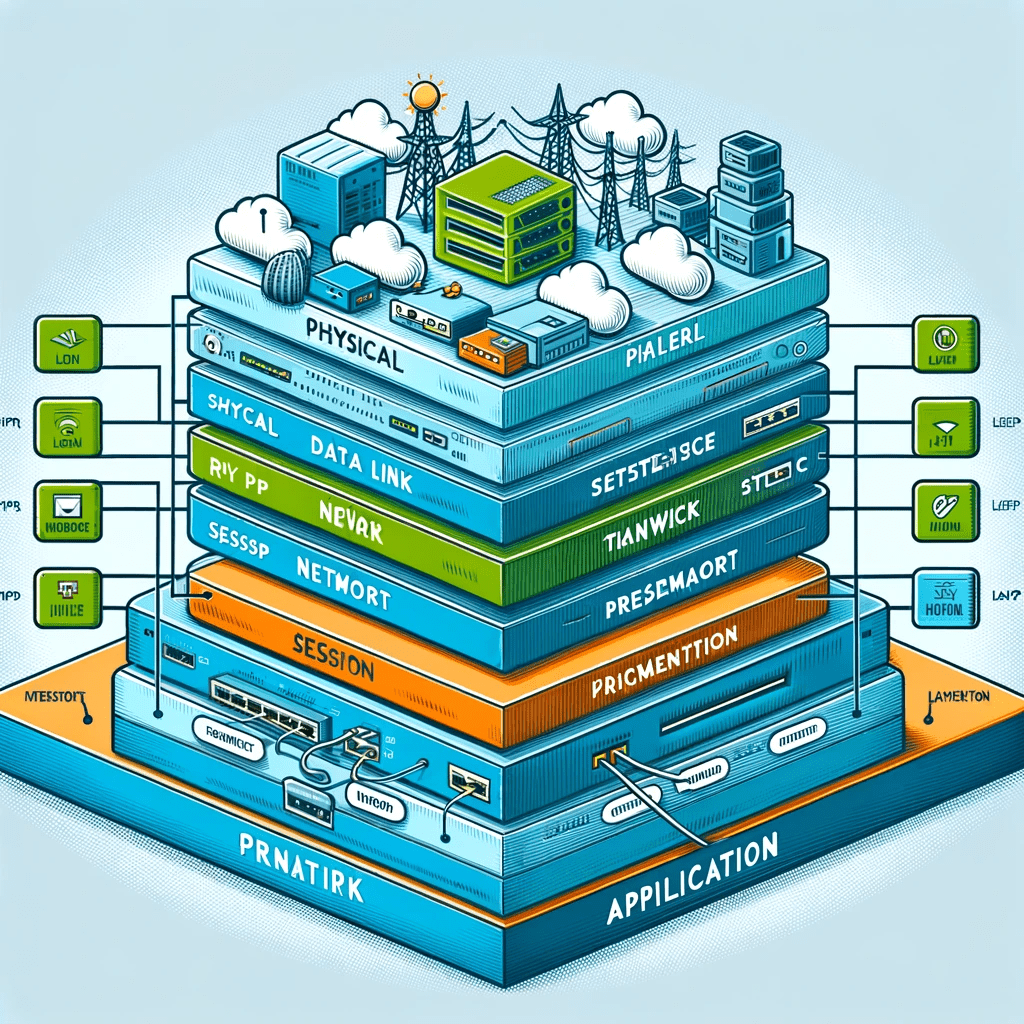Today’s lesson goal: Understand the OSI (Open Systems Interconnection) Model and its seven layers in networking.
The OSI Model is a conceptual framework used to understand network interactions in seven distinct layers. Each layer serves a specific function and communicates with the layers directly above and below it.
1. Physical Layer:
- Function: Transmits raw bit stream over the physical medium.
- Components: Cables, fibers, connectors, repeaters.
2. Data Link Layer:
- Function: Handles error detection and correction from the physical layer.
- Components: Switches, bridges, MAC (Media Access Control) addresses.
3. Network Layer:
- Function: Manages device addressing, tracks the location of devices, and determines the best way to move data.
- Components: Routers, IP addresses.
4. Transport Layer:
- Function: Ensures complete data transfer.
- Components: TCP/UDP (Transmission Control Protocol/User Datagram Protocol), port numbers.
5. Session Layer:
- Function: Manages sessions between applications.
- Components: APIs, sockets.
6. Presentation Layer:
- Function: Translates data between the application layer and the network.
- Components: Encryption, data compression.
7. Application Layer:
- Function: Closest to the end user. It facilitates interaction between applications and users.
- Components: Web browsers, email clients.
Importance:
- Standardization: Helps different computer systems communicate regardless of their underlying architecture.
- Troubleshooting: By dividing the network into manageable layers, it simplifies troubleshooting and development.
Applications:
- Networking: Designing and managing networks.
- Software Development: Creating network-enabled software.
The OSI model is fundamental in the field of networking, providing a standardized framework that aids in the development, implementation, and troubleshooting of network systems.
